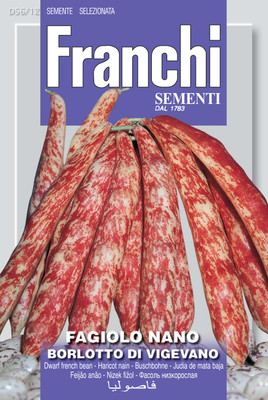Grow Old for New
Paolo Arrigo on 6th Jun 2023
Old for new
I wanted to focus on a couple of new varieties ‘New’ to our ranges for this year, but they are most definitely heritage varieties with provenance and lost flavours. The history of these old varieties is just so interesting, but keeping that biodiversity going is essential as upto 94% of heritage veg have been lost in just 1 century. Seed banks are an insurance policy yes, but the best way to ensure these ever-fewer varieties survive and prosper, is to grow them or lose them forever.
TOMATO CANESTRINO – An old variety from Lucca in Tuscany, pear shaped, meaty with few seeds inside, rustic with lost flavour. This heritage variety from Lucca and is Slow Food endorsed such is its importance. Each family would keep the seed and guard it fiercely as it always got higher prices than other varieties in Piazza di Carmine market. Lucca Canestrino Tomato - Presìdi Slow Food - Slow Food Foundation (fondazioneslowfood.com) it was gradually abandoned as people switched to modern varieties but now it has been reintroduced again in Italy. It has thin skin and soft dense flesh and can range from 150 and 200g to 300g. Sweet, low acidity, high sugar content, heady fragrance and intense flavour. Excellent in salads but also for canning and sauces due to its low water content.
Dwarf Borlotto Bean of Saluggia – Dating to at least 1535, this small mottled bean has played an important part in the local economy of Saluggia in the Alpine Piemonte region. It is no accident that Borlotto beans hail from Alpine northern Italy where they would have been dried to use throughout the bitter winters and can be seen in a variety of local dishes from ‘Paniscia’ to soups, stews, minestrone, ‘Pignatta’ and risotti. The Saluggia bean is traditionally sown after the cultivation of barley, thus in June and July; it is harvested in Sep, but you can sow them from Apr like other beans. Sow 2cm in depth and transplant after the risk of frosts has passed. Very easy to grow.
Spinach Monstrueuex de Viroflay – This variety is endangered and hails to the cold Parisian suburbs of the 16th century where it prosepered. It is highly prized because it produces numerous very meaty, large smooth leaves and traditionally it supplied the Halles market in Paris. It is an early variety that grows quickly, yielding one production in the spring and another in the autumn and even known to resist Parisian summers. Alas production now centres on hybrids and thick leafed baby spinaches which can be mechanically harvested and so there are few producers now.
